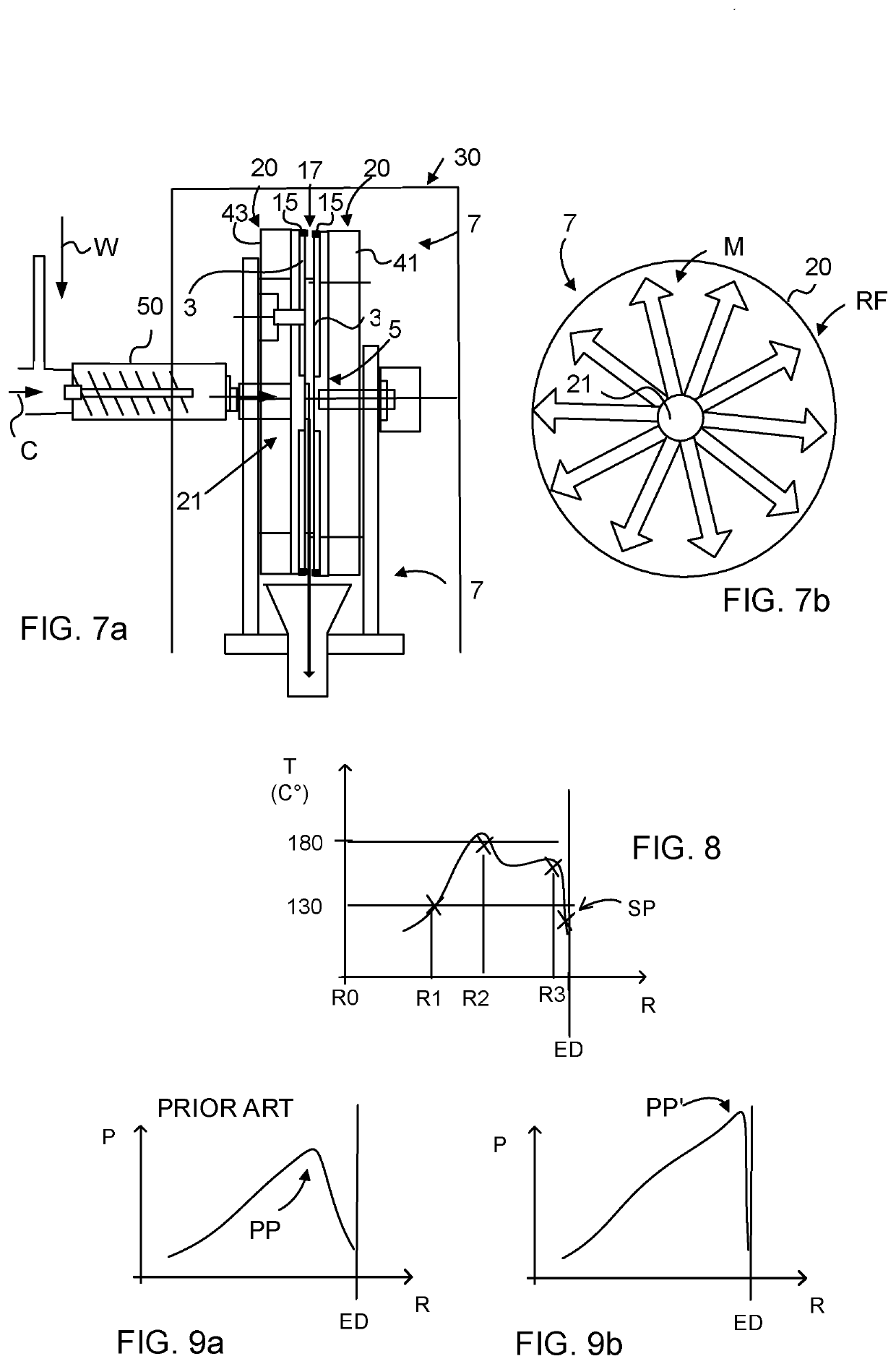Refiner apparatus and a method for refining cellulosic material
a cellulosic material and refiner technology, applied in the field of refiner plate segments, can solve the problems of high energy consumption of prior art refining systems, inefficiency, and frequent change of refiner plate segments, so as to reduce the effect of grinding material and reduce the energy needed for the process. , the effect of high quality
- Summary
- Abstract
- Description
- Claims
- Application Information
AI Technical Summary
Benefits of technology
Problems solved by technology
Method used
Image
Examples
Embodiment Construction
[0063]Hereinafter, embodiments of the present invention will be described in detail with reference to the accompanying drawings, wherein for the sake of clarity and understanding of the invention some details of no importance are deleted from the drawings.
[0064]FIG. 1 illustrates a refiner plate segment 1 showing its interior side comprising a pattern of grinding bars 3. The refiner plate segment 1 together with other refiner plate segments 1 is to be arranged on a first (rotor) and second (stator) refiner discs. The refiner plate segments 1 mounted on the refiner discs constitute an important component of a disc-type refiner apparatus (not shown, see for example FIG. 10), which is adapted to grind a saturated cellulosic material in a refining gap (not shown) defined by the opposed discs during use of the apparatus, the saturated cellulosic material being moved from a refiner inlet opening of e.g. the stator towards an outer edge of the refiner plate segment. The grinding bars 3 are...
PUM
| Property | Measurement | Unit |
|---|---|---|
| pressure | aaaaa | aaaaa |
| temperature | aaaaa | aaaaa |
| perimeter | aaaaa | aaaaa |
Abstract
Description
Claims
Application Information
 Login to View More
Login to View More - R&D
- Intellectual Property
- Life Sciences
- Materials
- Tech Scout
- Unparalleled Data Quality
- Higher Quality Content
- 60% Fewer Hallucinations
Browse by: Latest US Patents, China's latest patents, Technical Efficacy Thesaurus, Application Domain, Technology Topic, Popular Technical Reports.
© 2025 PatSnap. All rights reserved.Legal|Privacy policy|Modern Slavery Act Transparency Statement|Sitemap|About US| Contact US: help@patsnap.com



